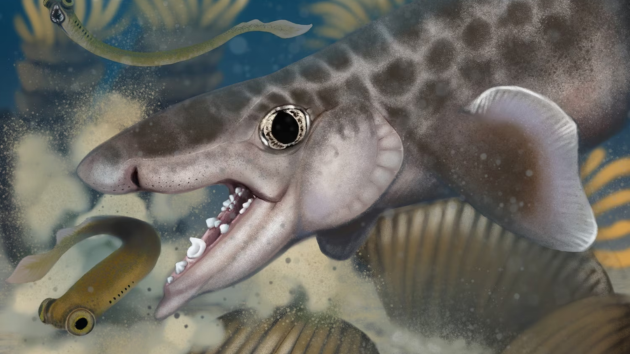
(NEW YORK) — A new species of ancient shark has been discovered at Mammoth Cave National Park in Kentucky, officials said.
Named Macadens olsoni, the fossils were found in the Ste. Genevieve Formation, dating back approximately 340 to 335 million years to when Mammoth Cave was submerged in a warm, shallow sea teeming with life including crinoids and corals, according to the National Park Service.
“This discovery is a remarkable addition to our understanding of ancient marine life and underscores the importance of preserving and studying our natural history,” said Superintendent Barclay Trimble.
Growing to less than a foot in length and most likely feasting on mollusks and worms, the new shark species is notable for its unique curved row of teeth designed for crushing small sea creatures.
“The name Macadens olsoni pays tribute to both Mammoth Cave and Rickard Olson, a retired park scientist who played a crucial role in documenting shark fossils in the park as part of a recent Paleontological Resource Inventory (PRI),” officials said. “The research was conducted by a team of scientists from the National Park Service Paleontology Program, Mammoth Cave National Park, and the Smithsonian Paleobiology Department. In addition to Macadens olsoni, researchers studied another ancient shark, Helodus coxanus, now renamed Rotuladens, meaning “Wheel Tooth.” This species shares similarities with Macadens olsoni and highlights the diversity of ancient marine life.”
More than 40 different species of fossil sharks and relatives have been identified from Mammoth Cave specimens in the past 10 months, officials said.
“This finding not only enhances our knowledge of ancient marine ecosystems but also emphasizes the critical role of paleontological research in our national parks,” Trimble added. “Every discovery connects the past with the present and offers invaluable educational opportunities for students and the public.”
Copyright © 2025, ABC Audio. All rights reserved.



